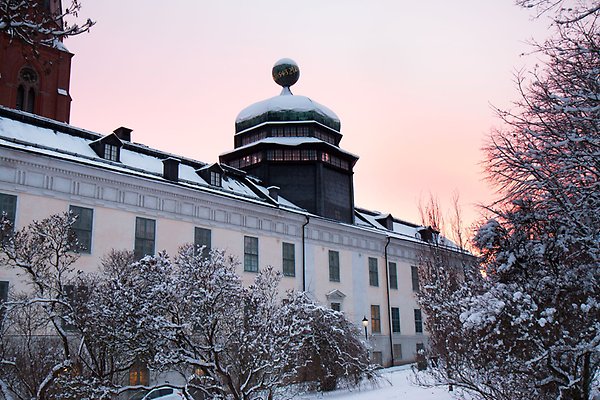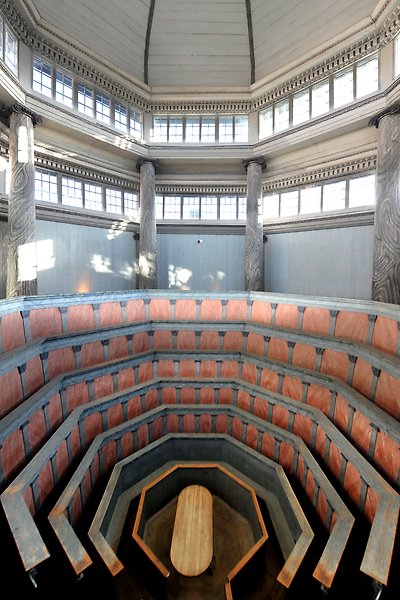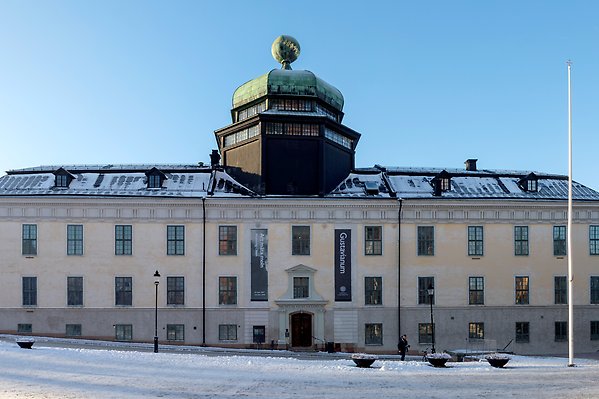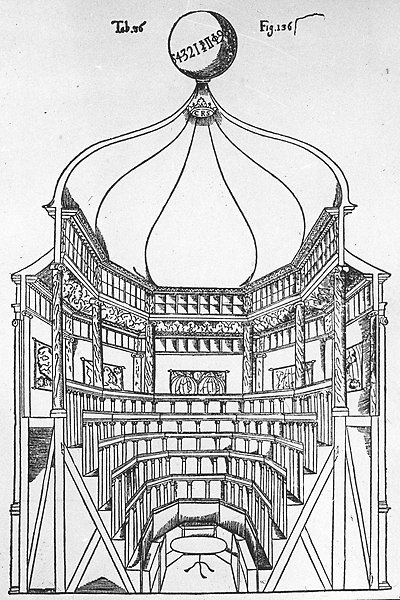History of Gustavianum
Gustavianum, Uppsala University’s oldest surviving building, was completed in 1625. Currently, the building is closed for renovations until the beginning of 2024.

Photo: David Naylor
Gustavianum's history in brief
Gustavianum, which derives its name from Gustavus Adolphus, King of Sweden from 1611 to 1632, was designed to meet the University’s need for lecture halls and meeting rooms. It also provided space for a dining room, student rooms and eventually a library.
During the latter part of the 17th century, the building underwent a series of restorations directed by Olof Rudbeck the Elder. This is when the cupola with the Anatomical Theatre was added.
Gustavianum remained the University’s main building until completion of the new University Main Building in 1887. Prior to this, the library had been moved to Carolina Rediviva by the middle of the 19th century.
In 1935 Gustavianum became a protected historical monument. Since 1997 Gustavianum has served as the Uppsala University Museum.
The Anatomical Theatre
In 1662 and 1663, Olof Rudbeck the Elder oversaw the construction of an anatomical theatre on the roof of Gustavianum. The University used the room for dissections in front of audiences consisting of colleagues, students and a paying public.
The cupola of the Anatomical Theatre rises above Gustavianum’s other roofs, and daylight from the windows is the only source of light. The basic structure is patterned after the classical Greek amphitheatre. The room accommodates 200 spectators.

The Anatomical Theatre. Photo: Stewen Quigley
From University building to University Museum
Towards the end of the 19th century, Gustavianum’s roof was elevated by almost three metres to house the University’s library. At the beginning of the 18th century, palace architect Carl Hårleman made interior and exterior changes. He removed the freestanding staircase that originally led up to the second floor, replacing it with two new main entrances on the ground floor.
During the 1840s the entrance acquired its current design, with an open staircase that extends over two floors. Upon completion of the new Carolina Rediviva University Library, the book collections were moved. By then, the Anatomical Theatre had outlasted its purpose, and the furnishings were taken down to make way for a zoological museum in the early 20th century.

The entrance as it looked from the 1840s until the current renovation.
In the early 1920s, Gustavianum underwent another renovation, and several institutions, including the Victoria Museum and the Uppland Museum, moved in. In 1935, Gustavianum became a protected historical monument. In the 1950s, the Anatomical Theatre was restored to Olof Rudbeck’s original drawings.
In 1996, the departments of Archaeology, Ancient History and Society, and Egyptology moved out of Gustavianum to make way for a new University museum. Extensive renovations recreated the main floor’s library rooms based on Hårleman’s drawings.
In the autumn of 2019, Gustavianum closed for new extensive renovations. The main purpose is now to improve the environmental conditions for exhibited objects and increase the total floor space for exhibitions. Sweden’s National Property Board is carrying out the renovations in close collaboration with Uppsala University. The work is expected to continue until 2024.

Olof Rudbeck’s drawing of the Anatomical Theatre.
